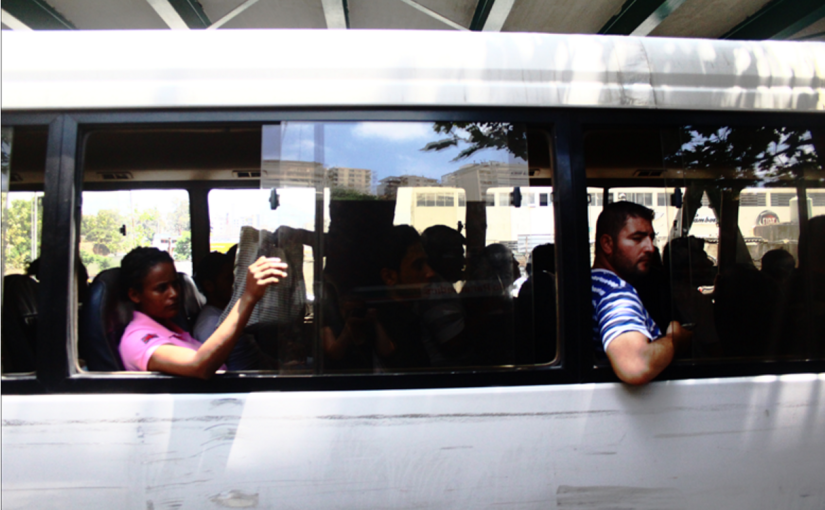This post is part of an ongoing series highlighting the unique and complex experiences of women who use public transport in Lebanon. Do you have a story you want to share? We will post it with as much, or as little, editorial input as you request, to make sure that your voice is in the forefront. You can write in English, Arabic or French, and when appropriate, we will share a translation that sticks as closely as possible to the spirit of your story. Share an experience, keep it personal, make it academic, be creative — your city needs your voice! N.B. Scroll down for our translation of Farah’s story.
* * *
ان النقل العام في لبنان غير منظم بحيث لا يوجد محطات معينة لنقل الركاب ولا حتى الركاب على علم بمواعيد انطلاق الباصات
لكن لمن لا يملك خيار سوى النقل العام يخضع للأمر الواقع وهو عشوائية النقل. قد يكون هذا الخيار أسهل بالنسبة للرجال اما للنساء فالوضع يختلف قليلا بحيث نتجنب الوقوع في موقف محرج كالتحرش وما شابه
لذلك تتجه بعض النساء الى الباصات لأنها وسيلة أمنة وقد علمت هذا من تجربة شخصية
في احدى المرات كنت متوجهة الى الأشرفية، اخترت أن أصعد ب تاكسي لكن كان خياري خاطئ فقد كان سائق التاكسي ينظر بطريقة تثير القلق عندها قررت النزول متحجج بأني غيرت وجهة ذهابي طبعا بعد نزولي كنت أبحث عن سيارة أجرة جديدة وفي نفس الوقت كان باص رقم 2 يتوجه نحوي صعدت وكانت أول تجربة لي لم تكن سيئة بل على العكس فقد كنت أشعر براحة فالركوب بالباص يجنبنا ك فتيات مواقف
.محرجة كثيرة ومع الوقت أصبحت على علم بوجهة الباص تبعا للأرقام التي تحملها
.قد يكون النقل العام من ضحايا العشوائية لكن بالرغم من هذا هناك ما هو منظم و رخيص
* * *
“Public transport in Lebanon isn’t regulated; there are no designated stations where passengers can be picked up, nor are passengers informed about their schedules.
Those who have no choice but to use public transport are forced to accept the way things are — namely, transit’s informality. This may be an easy choice for men, but for women, the situation is a little different, as women tend to avoid falling into uncomfortable situations, such as being harassed, and the like; for this reason, some women prefer to use the bus, as it is a safer mode of transport, as I learned from personal experience:
Once, on my way to Ashrafieh, I decided to take a taxi, but this turned out to be a bad decision, as the driver began to look at me in a worrying manner. I decided to get out of the car, pretending that I was changing the direction of my journey. Naturally, when I got out, I began to look for another taxi; that’s when I saw a Number 2 bus heading in my direction, so I boarded it for the first time. It wasn’t a bad experience. On the contrary, I felt relaxed, since riding the bus helps us young women to avoid very uncomfortable situations. And with time, I began learning about different buses by their numbers.
Public transport may be a victim of informality, and yet, in spite of this, it offers cheap and organized options.
* * *
Photo by Megan Barlow, taken as part of last summer’s Bus Map Photo Action
